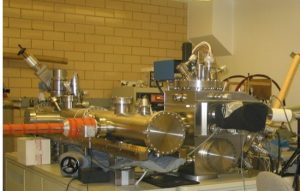
Iowa State University’s Magnetic Research Group is investigating topological electromagnetic sensors, a subject related to the recent Nobel Prize for physics for theoretical discoveries of topological phase transitions and topological phases of matter.
The Nobel Prize was awarded half to David J. Thouless at the University of Washington, Seattle, and half to F. Duncan M. Haldane of Princeton University and J. Michael Kosterlitz of Brown University.
The ISU team consists of Electrical and Computer Engineering graduate student Yan Ni and two undergraduate research assistants under the direction of Principal Investigator, David C. Jiles, funded by the National Science Foundation. Dr. Zhen Zhang also was a part of the project before moving to another university.
Ni said the difference between Iowa State’s research and the Nobel Prize-winning project was an engineering application versus theory. The group is doing an engineering component of topological insulators, which is beyond the science and the next advancement toward the application of topological phases.
The objective of the group’s research is to build ultra-sensitive magnetic field sensors based on the newly discovered material, topological insulators. Based on the discoveries of the Nobel Prize winners, under Jiles’ supervision, Ni’s research systemically investigated several approaches toward demonstrating the proof-of-concept axion-electromagnetic effect (AEM), as well as device fabrication. Four critical challenges were met, including opening the surface band gap, reducing the bulk conductivity, tuning the Fermi level and increasing device working temperature by quantum capacitance. They also applied topological insulators into a special kind of Hall sensor to increase the sensitivity magnitude.
Jiles said ISU’s Magnetic Research Group’s work is significant because they are furthering the discoveries made by the Nobel Prize winners.
“We place emphasis on engineering applications, building devices — particularly sensors — out of this novel quantum material,” Jiles said. “This goes beyond the basic science that won the Nobel Prize last month, and takes a further step towards applications that can be used in daily life.”
The Magnetic Research Group’s discoveries have brought worldwide interest. They have 10 publications, including journals, invited book chapters and a thesis, as well as conference presentations. In general, interest in using topological properties to understand and describe physical systems has expanded. The nanotechnology revolution is a driving force. Real materials are catching up to to the theory, giving experimentalists a chance to observe exotic physics in action. Another reason for the enthusiasm is the potential for applications in quantum computing, which is mostly a theoretical model at present.
In the future, Jiles said the group will continue their research work on topological insulators-based sensors.